Tips on Avoiding Barotrauma
from The Fishing Wire

Device taking fish to bottom
NOAA’s Deepwater Horizon restoration partners at the Gulf States Marine Fisheries Commission selected three new partners to conduct studies on reef fish restoration in the Gulf of Mexico. They were chosen through a competitive process, and the awards total approximately $690,000.
These studies are contributing to a $30 million project to encourage anglers to use fish descending devices. These devices increase survival of reef fish experiencing barotrauma in the Gulf’s recreational fisheries approved by the Deepwater Horizon Open Ocean Trustees.
Barotrauma is damage caused by the rapid expansion of gases in fish that are caught in deeper water and quickly brought up to the surface. As the gases expand, they can damage the eyes, stomach, and other parts of the fish. This makes it difficult for them to swim back down and survive once released. Descending devices help fish by quickly releasing them at their normal depth, reducing the number of reef fish that die from catch and release fishing.
Coming to a Charter Boat (or Inbox) Near You

Decender Device on Charter Boat
An angler holds a red fish with a fish descender device, about to release it back into the water.
Fish descender devices come in multiple forms, this one is pressure activated, releasing the fish at a specific depth automatically. Credit: NOAA Fisheries, Florida Sea Grant
All three studies will focus on the use of descending devices to help fish return to their underwater habitats, away from predators. Anglers can help restore fish populations impacted by the Deepwater Horizon oil spill by using these devices.
The first two studies will be conducted offshore, working with close to 40 recreational charter boat captains. Captains will:
Recapture fish previously tagged and released using descending devices, to increase understanding of survival rates
Deploy underwater cameras to shed light on whether predators, like sharks, are targeting fish when they are released with descender devices
Receive training on best practices while using descending devices
Gulf reef fish anglers should also be on the lookout for mail and email surveys from partners at Southwick Associates. These surveys will help the project team understand barriers to using descending devices. By participating in the studies, anglers will help inform future angler outreach and education methods.
Study Descriptions
Results from the three studies will contribute to restoration efforts that increase the health of reef fisheries impacted by the Deepwater Horizon oil spill, while improving angler experiences. The work will be carried out through 2025.
Determination of Predation Mortality, Barotrauma Survival, and Emigration Patterns for Catch-and-Released Red Snapper
Partner: Dr. Stephen Szedlmayer, Auburn University School of Fisheries, Aquaculture, and Aquatic Sciences
Award: $250,750
Timeline: 20-month project, ends December 2022
A team from Auburn University will collaborate with eight charter vessel operators to better understand the survival rates of red snapper released with descending devices. The team will tag and release red snapper across a range of locations and depths off the coast of Alabama and Mississippi. Participating captains will return to the tagging sites within 2 to 4 weeks to recapture as many tagged fish as possible. A combination of different tagging methods will provide a robust evaluation of descending methods and their effect on red snapper survival.

Barotrama make fish easy meals
This fish was an easy lunch for a bull shark after being released without help from a descending device. Credit: NOAA Fisheries, Florida Sea Grant
Do Descender Devices Increase Opportunities for Depredation? A Gulf-wide Examination of Descender Device Depredation Rates and Depredating Species
Partner: Dr. Marcus Drymon, Mississippi State University Coastal Research and Extension Center
Award: $238,981
Timeline: 32-month project, ends December 2023
Working with 30 charter boat captains, this study will document whether hooked reef fish are eaten by predators and which species are responsible. This team from Mississippi State University will train and incentivize captains across the Gulf of Mexico to use descending devices and film fish releases with cameras. The team will then analyze the video footage, and results will be used to inform best release practices and address depredation concerns with descended fish. The project team will make short videos to train captains on data collection processes and share project results with stakeholders.
Measuring Changes in Angler Awareness and Use of Fish Descending Devices
Partner: Southwick Associates
Award: $200,000
Timeline: Baseline study in 2021, follow-up study in 2025.
Southwick Associates will assess recreational reef fish anglers’ current knowledge of fish descending devices. The goal is to establish an understanding of anglers’ perceptions about releasing reef fish and identify barriers to using descending gear. Understanding barriers will inform future education and outreach, and help anglers learn the advantages of best release practices. In 2025, the team will measure the change in anglers’ awareness and adoption of descending gear over time.
Improving Recreational Fish Survival is One Project Among Many Restoring Marine Resources After Deepwater Horizon

Fish showing barotrama damage
An angler holds a fish, its mouth open and air bladder inflated from barotrauma.
Barotrauma expands gasses in a fish causing the air bladder and other organs to expand as well, making it difficult for fish to swim after release. Credit: NOAA Fisheries, Florida Sea Grant
These studies are one part of a comprehensive $30 million project reducing barotrauma injuries and deaths in reef fish. The project also aims to increase successful use of fish descender devices by distributing them to recreational anglers and providing information on their use. Supplying fishermen with the tools and knowledge to minimize barotrauma-related fish death and injury will result in increased survival of species released during recreational fishing activities.
This barotrauma project was one of four fish restoration projects funded by the Deepwater Horizon Open Ocean Trustees’ 2019 $226 million restoration plan. The remaining 14 projects in the plan are restoring sea turtles, marine mammals, and deep-sea coral habitats.
Hundreds of fish species were exposed to oil during and after the Deepwater Horizon spill. The exposure killed fish larvae that would have grown and contributed to the food web and fisheries. It also impaired fish growth and reproduction and caused changes in reef fish communities. Recognizing these and other impacts, the settlement with BP included $380 million to help restore injuries to fish and water column invertebrates.

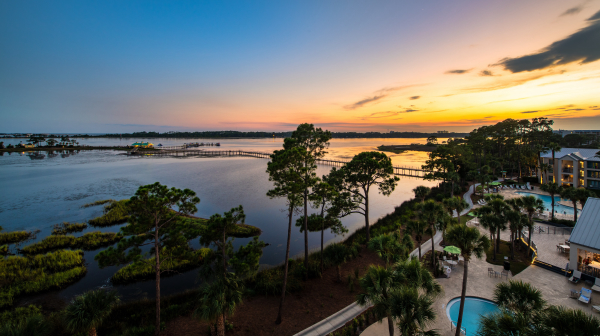 The Sheraton Panama City Beach is a great spot for anglers and boaters, with wadefishing on the premises, boat docks just across the walkway over the lagoon.
The Sheraton Panama City Beach is a great spot for anglers and boaters, with wadefishing on the premises, boat docks just across the walkway over the lagoon.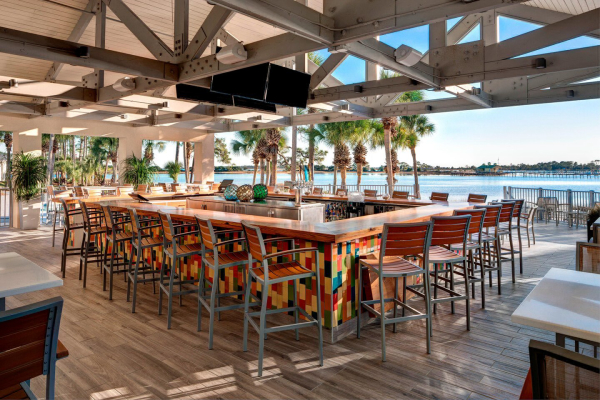 Flip Flop’s Bar and Restaurant in Panama City Beach is close enough to the lagoon to hear the mullet jump.
Flip Flop’s Bar and Restaurant in Panama City Beach is close enough to the lagoon to hear the mullet jump.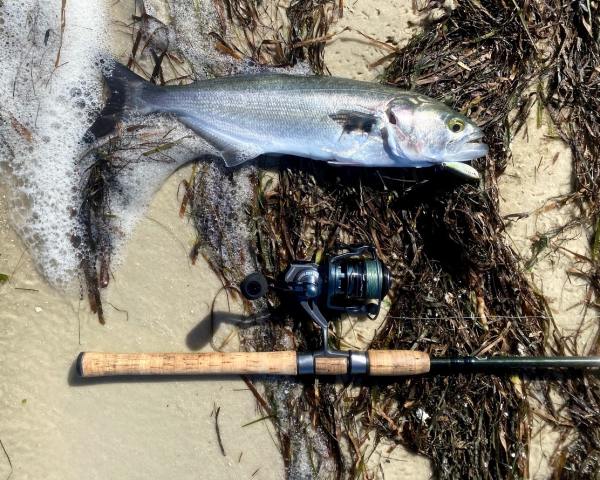 Bluefish are a common catch all along the Gulf Coast so long as the baitfish are still present, which they typically are from April through early November. While wadefishing gets you to lots of fish, it’s also possible to rent kayaks and paddleboards at many locations along the coast, adding considerably to range as well as allowing you to fish deeper water if that’s where the fish are holding.
Bluefish are a common catch all along the Gulf Coast so long as the baitfish are still present, which they typically are from April through early November. While wadefishing gets you to lots of fish, it’s also possible to rent kayaks and paddleboards at many locations along the coast, adding considerably to range as well as allowing you to fish deeper water if that’s where the fish are holding. 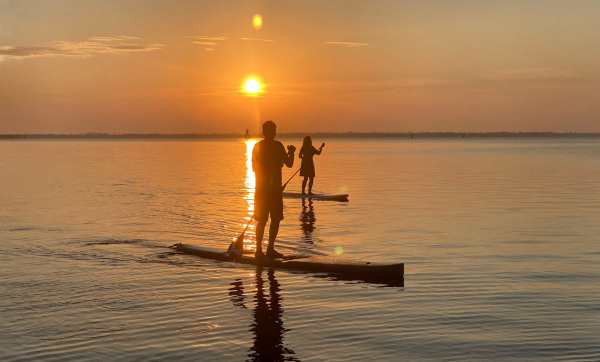 Standup paddleboards float in just inches of water, while allowing access to miles of great flats fishing all along the north Gulf Coast.
Standup paddleboards float in just inches of water, while allowing access to miles of great flats fishing all along the north Gulf Coast.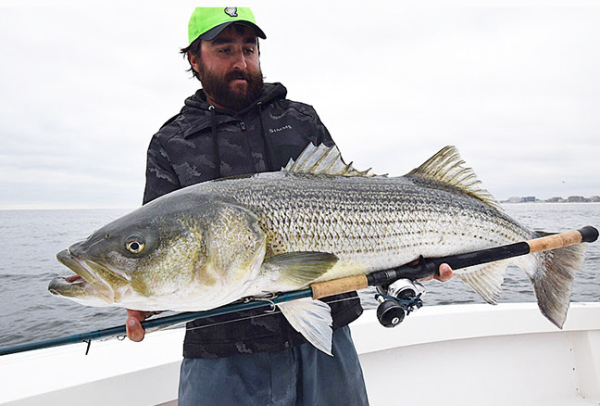 Radlof says the bass are primarily feeding on adult bunker inshore.
Radlof says the bass are primarily feeding on adult bunker inshore.  Carter is finding success on bigger trout with topwaters and suspending twitch baits, and well as Z-Man
Carter is finding success on bigger trout with topwaters and suspending twitch baits, and well as Z-Man 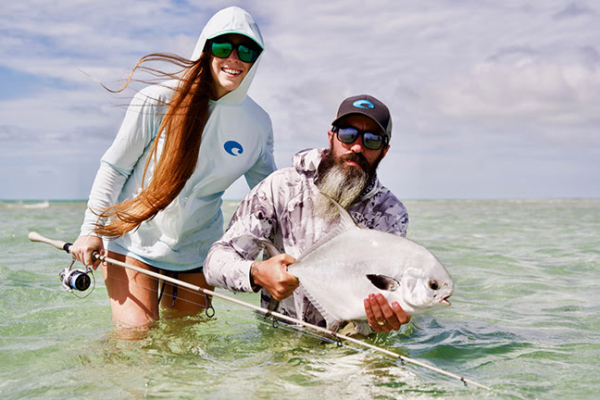 Brown touts sight fishing the flats this time of year when conditions are favorable. “I like to pair a 3000 series spinning reel with a St. Croix 7’, medium-light power, new
Brown touts sight fishing the flats this time of year when conditions are favorable. “I like to pair a 3000 series spinning reel with a St. Croix 7’, medium-light power, new 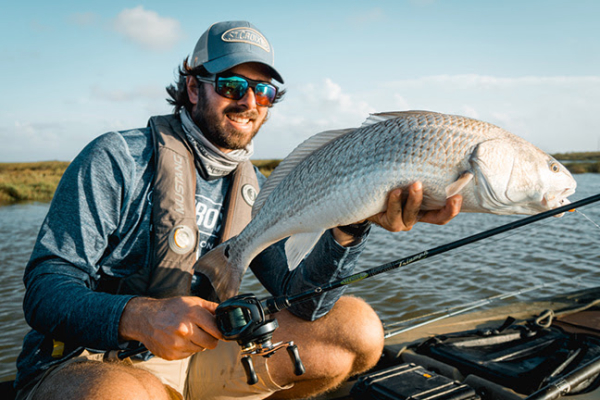 Sanderson drills down on Triumph Inshore’s varied handle options. “I preferred the 7’ version a bit better with the longer, full cork handle because I prefer to cast with two hands, but found the shorter-handled 6’8” split-grip an ideal option for wading. It’s rare to find a casting rod that performs with the lightweight jigs and baits I use so much of the time, and both of these rods excelled.”Sanderson and Gonzalez were impressed with the new Triumph Inshore rods from the start. “When I unpackaged these rods, the first thing I noticed was the surprisingly high quality of the cork and their beautiful finish,” Sanderson says.
Sanderson drills down on Triumph Inshore’s varied handle options. “I preferred the 7’ version a bit better with the longer, full cork handle because I prefer to cast with two hands, but found the shorter-handled 6’8” split-grip an ideal option for wading. It’s rare to find a casting rod that performs with the lightweight jigs and baits I use so much of the time, and both of these rods excelled.”Sanderson and Gonzalez were impressed with the new Triumph Inshore rods from the start. “When I unpackaged these rods, the first thing I noticed was the surprisingly high quality of the cork and their beautiful finish,” Sanderson says. 
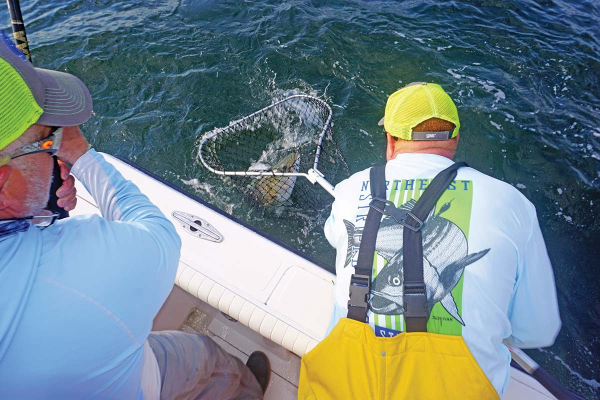 Chuck Many nets a good fish for Dave Glassberg during the spring run off the Jersey Shore during the 2020 Northeast Striped Bass Study.
Chuck Many nets a good fish for Dave Glassberg during the spring run off the Jersey Shore during the 2020 Northeast Striped Bass Study.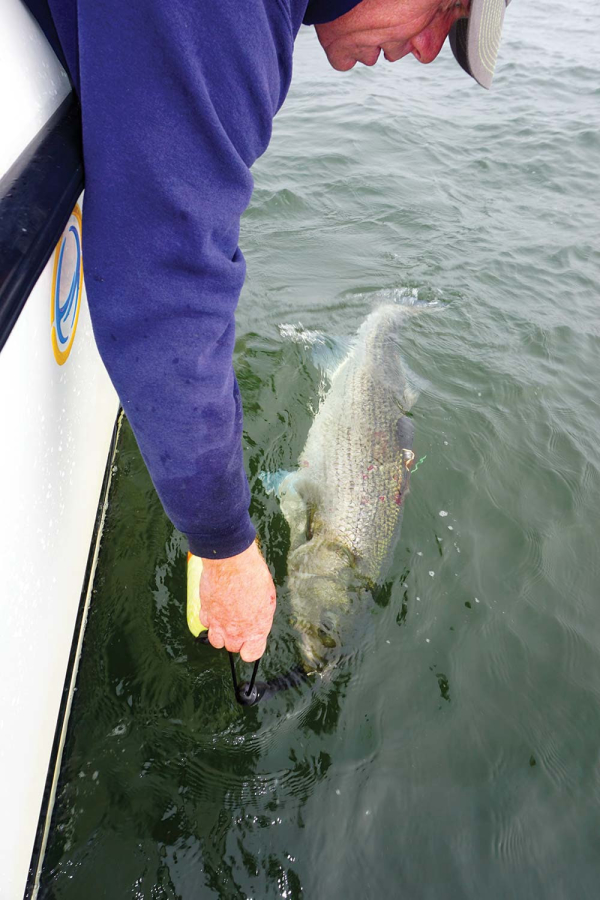 With both a MiniPSAT device and a Gray FishTag Research “streamer” tag, a 46-1/2-inch striped bass called Rona is released back in the waters off Sandy Hook for the start of her tracking adventure.So the $10,000 question we’ve all been waiting to answer with baited breath; where did Cora and Rona eventually get to, and did they follow a similar offshore path to what Freedom and Liberty did during the 2019 study?
With both a MiniPSAT device and a Gray FishTag Research “streamer” tag, a 46-1/2-inch striped bass called Rona is released back in the waters off Sandy Hook for the start of her tracking adventure.So the $10,000 question we’ve all been waiting to answer with baited breath; where did Cora and Rona eventually get to, and did they follow a similar offshore path to what Freedom and Liberty did during the 2019 study? 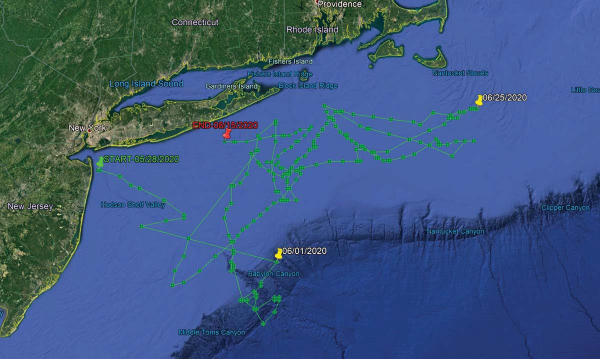 The first striper deployed with a MiniPSAT device in 2020, Rona shows a rather incredible migratory journey between May 28 and August 15.
The first striper deployed with a MiniPSAT device in 2020, Rona shows a rather incredible migratory journey between May 28 and August 15.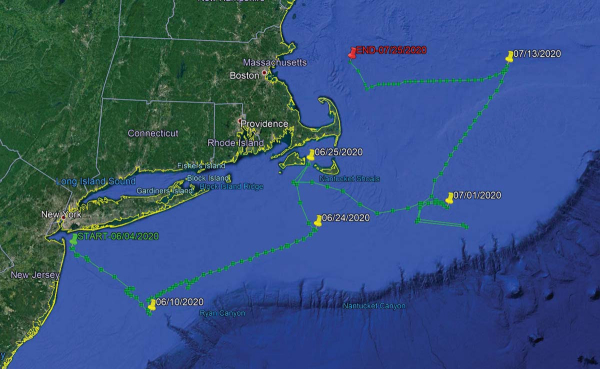 While Cora was the second fish “sat” tagged on June 3, hers was the first MiniPSAT to “ping” the Argos satellite on August 1 after coming undone prematurely on July 25.And similar to Cora which traversed darn close to the Texas Tower, data shows Rona making a quick run southwest of the Hudson tip in the area around the Triple Wrecks where yellowfin action was completely off the charts in 2020 with pelagics gorging on sand eels and keeping rods bent through early fall.
While Cora was the second fish “sat” tagged on June 3, hers was the first MiniPSAT to “ping” the Argos satellite on August 1 after coming undone prematurely on July 25.And similar to Cora which traversed darn close to the Texas Tower, data shows Rona making a quick run southwest of the Hudson tip in the area around the Triple Wrecks where yellowfin action was completely off the charts in 2020 with pelagics gorging on sand eels and keeping rods bent through early fall. 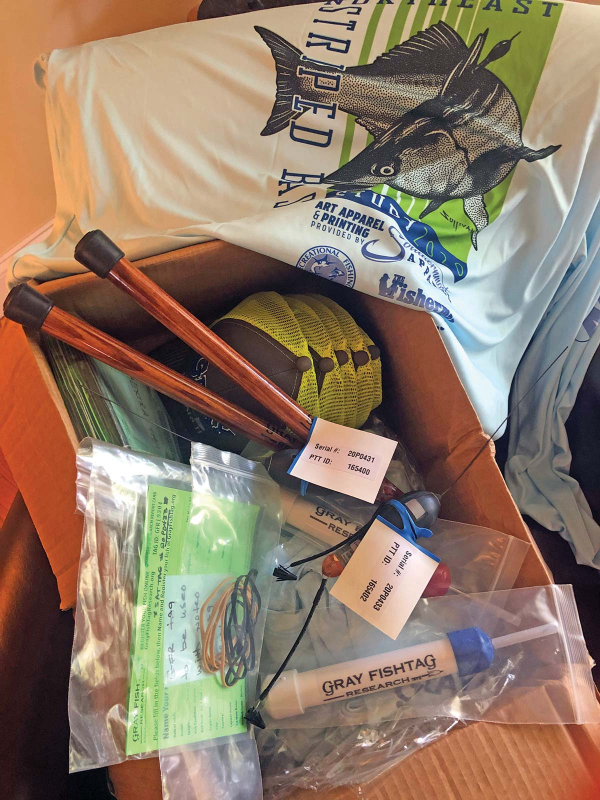 While a global pandemic impacted scheduling of the 2020 Northeast Striped Bass Study, the first batch of tagging gear arrived just in time for the Memorial Day weekend.“It is our team’s mission in our tagging work to always keep the data collected as open access to all,” Dobbelaer said of the team’s research, adding
While a global pandemic impacted scheduling of the 2020 Northeast Striped Bass Study, the first batch of tagging gear arrived just in time for the Memorial Day weekend.“It is our team’s mission in our tagging work to always keep the data collected as open access to all,” Dobbelaer said of the team’s research, adding 
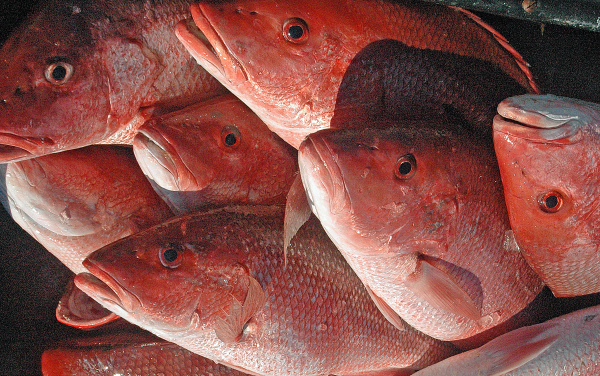 By DAVID RAINER
By DAVID RAINER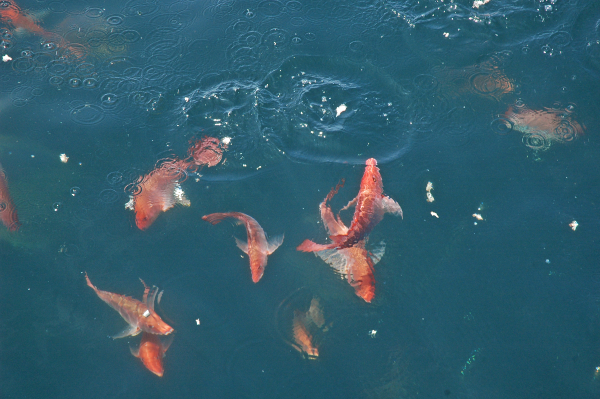 “This time of year, we will continue to have challenges with the weather,” he said. “People will have multiple conflicts with their schedules based on kids being in school and hunting seasons. We know the weekend effort won’t be like summertime weekends. We will keep up with the harvest through Snapper Check and post it on our webpage (
“This time of year, we will continue to have challenges with the weather,” he said. “People will have multiple conflicts with their schedules based on kids being in school and hunting seasons. We know the weekend effort won’t be like summertime weekends. We will keep up with the harvest through Snapper Check and post it on our webpage (